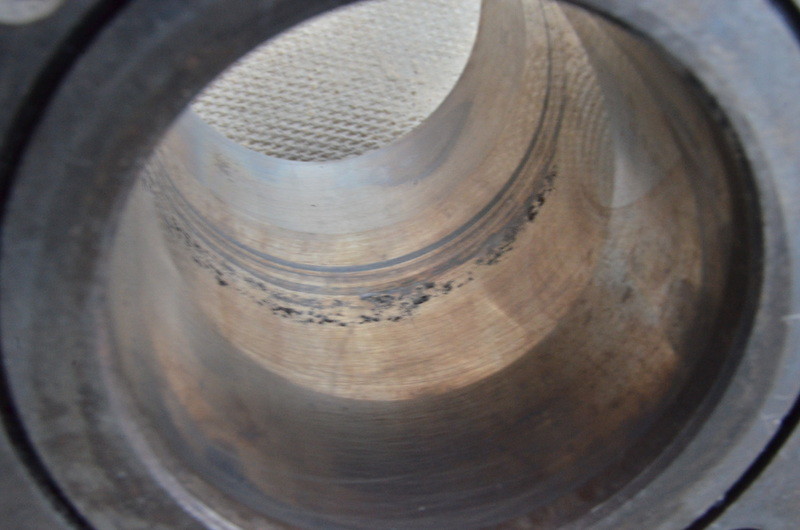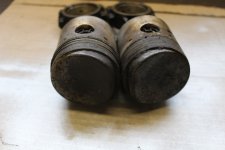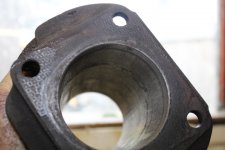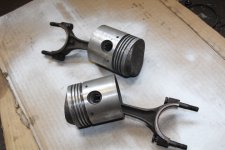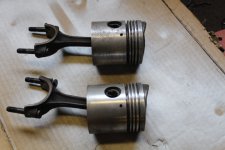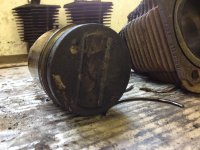I am glad to say that the other piston is now out!
I have heated, cooled, hit it, soaked it in oil, petrol, White Vinegar, Rust eater and WD40 and set it on fire!
Eventually I had to mount the cylinder in the largest vice I could find clamped around the lower section. This was risking damaging the machined face that sits on the block but it was the only way I could hold it still.
I then shaped a piece of wood to fit in the bore with a rough shape of the piston to spread the load. Whacked it as hard as I could with a large hammer a number of times and it moved!
Finally got it out to find that all the rings were rock solid in their grooves. They were completely packed tight with carbon etc.
I managed to remove the rings - broke a few getting them out and then cleaned the grooves out with a small screwdriver and part of the broken ring as this removes the crud and cleans it completely out to the point that the ring fits the groove again.
The oil control rings were solid. I'm surprised any oil got through to the rings from inside the piston. The pistons have cleaned up fairly well.
There's some slight pitting from corrosion on one of the pistons but I think it will be ok.
The Cylinders are both slightly damaged from the rings/corrosion. There is also a slight lip at the top of the cylinder although I am thinking this is from the original pistons as the top ring on the high compression piston doesn't go up this high.
Next step give everything a quick clean then take it to the machine shop to get them to put everything in their cleaning tank and then check and diagnose if these components can be used again.
I might strip the 500L engine and see what condition the crank and cylinders are as I could possibly use these.
Does anyone know if a 126 crankshaft is the same as a 500D?




